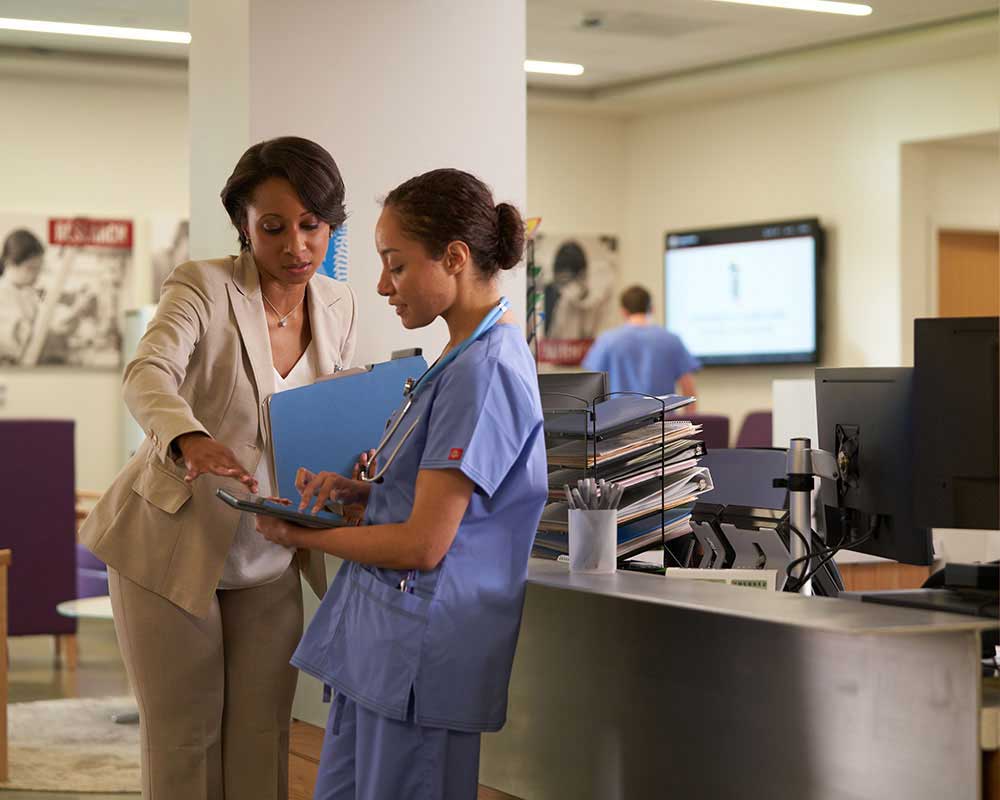Recognizing the Trick Functions and Responsibilities in Medical Administration
Recognizing the Trick Functions and Responsibilities in Medical Administration
Blog Article
Best Practices in Medical Administration for Improving Performance and Decreasing Expenses
In the ever-evolving landscape of health care, the search of best methods in clinical management is extremely important for boosting effectiveness and suppressing expenditures. By incorporating sophisticated modern technologies such as digital health records and telemedicine, medical care suppliers can enhance procedures and boost person care. Nonetheless, modern technology alone is not a panacea; maximizing resource appropriation and fostering joint interaction amongst care groups are equally essential (medical administration). As organizations aim to balance high quality and price, what methods should be prioritized to attain these twin objectives? The solutions to these inquiries hold the trick to a more sustainable health care system.
Leveraging Advanced Innovation
The combination of electronic options into healthcare systems has transformed the way facilities run, simplifying procedures and enhancing client treatment. By centralizing individual information, EHRs get rid of the requirement for troublesome documents and help with seamless communication amongst health care service providers.
Telemedicine is another technical development that has actually transformed patient communication. It provides ease for both people and healthcare specialists by making it possible for remote assessments, which can lower the demand for in-person gos to and maximize appointment organizing. Additionally, telehealth systems can expand medical care accessibility to country or underserved areas, linking voids in treatment shipment.
Furthermore, using Artificial Knowledge (AI) and artificial intelligence is coming to be progressively prevalent in predictive analytics, permitting early detection of possible health and wellness concerns and more educated decision-making. These innovations, when incorporated efficiently, can improve analysis precision and customize person therapy strategies, inevitably bring about enhanced health care outcomes and functional efficiency.
Optimizing Source Allocation
Effective source allocation is essential for making the most of the performance of clinical administration. By purposefully managing resources such as personnel, tools, and financial resources, medical care facilities can significantly enhance their functional performance, boost patient outcomes, and lower unnecessary expenses. The initial step in maximizing resource allowance includes conducting a thorough analysis of existing possessions and determining locations where resources might be underutilized or exhausted. This assessment should be data-driven, utilizing metrics and analytics to notify decision-making procedures.
Prioritizing resource allotment based on person demands and solution demands is important. This involves lining up sources with high-demand locations, such as emergency situation treatment or specialized therapies, to guarantee timely and efficient person care. Implementing adaptable staffing designs can likewise enhance labor resources by adjusting personnel allotment in feedback to changing individual volumes. Furthermore, embracing telemedicine and other technological remedies can alleviate physical resource restrictions by providing alternate methods for patient-provider communications.
Funds need to be carefully kept an eye on and alloted with critical foresight to sustain both short-term functional needs and long-term institutional goals. This includes investing in training programs that enhance team expertises and adopting energy-efficient techniques that decrease functional costs (medical administration). Eventually, a maximized source allowance technique promotes a sustainable medical care atmosphere that is receptive, reliable, and monetarily prudent
Streamlining Workflow Procedures
When medical care facilities aim to enhance operational performance, simplifying operations processes becomes a pivotal focus. Effective operations minimize redundancy, remove unnecessary steps, and boost coordination among medical care experts. This method not just accelerates solution delivery yet likewise improves the top quality of person treatment.

Following, modern technology assimilation plays a substantial role in enhancing workflows. Carrying out electronic health and here are the findings wellness records (EHRs) and computerized medical professional order entrance (CPOE) systems minimizes documents, reduces human mistake, and makes sure information comes to all pertinent personnel. Furthermore, leveraging telemedicine platforms can enhance person consultations and follow-ups, lowering the strain on physical facilities.

Eventually, structured process result in cost reductions and enhanced client complete satisfaction, fostering an extra lasting medical care atmosphere.
Enhancing Data Monitoring
Building upon structured workflows, enhancing information administration comes to be an essential part ahead of time health care administration. Efficient information management systems are important for preserving precise person records, boosting decision-making, and ensuring conformity with regulatory requirements. By carrying out robust information Bonuses monitoring services, health care facilities can boost the top quality of client treatment while simultaneously reducing functional expenses.
One secret facet of enhancing information administration is the combination of innovative digital wellness document (EHR) systems. These systems promote the seamless exchange of person information across different departments, decreasing replication of tests and lessening errors. A properly designed EHR system sustains data analytics, making it possible for doctor to recognize trends and make informed decisions regarding person treatment.
Moreover, protecting individual information is paramount. Adopting extensive cybersecurity steps, including file encryption and regular audits, makes certain the stability and discretion of sensitive details. This not just secures clients yet also keeps the organization's reputation.
Purchasing personnel training is another critical variable. Informing healthcare specialists on information administration techniques enhances their capability to properly use modern technology, causing boosted person results. Finally, improving information monitoring with advanced technology and thorough training is necessary for achieving effectiveness and price reduction in medical administration.
Fostering Collaborative Interaction
An important element in advancing medical administration is fostering joint communication amongst medical care specialists. Efficient interaction is critical for ensuring smooth individual care, enhancing Get More Information treatment outcomes, and reducing errors. By motivating open dialogue and coordination across multidisciplinary teams, health care organizations can enhance their functional performance and reduce unneeded costs.
Central to this technique is the assimilation of communication modern technologies such as electronic health records (EHRs) and protected messaging systems, which help with the quick exchange of vital patient information. These tools allow healthcare providers to access and share information in genuine time, making certain that all staff member are educated and straightened in their decision-making processes. Additionally, regular team meetings and interdisciplinary rounds can additionally advertise a culture of cooperation and responsibility.
Educating programs focused on enhancing interaction skills are likewise crucial. Ultimately, promoting collective interaction leads to enhanced health care shipment and cost savings.

Final Thought
Incorporating sophisticated technology, such as electronic wellness documents and telemedicine, together with optimized source appropriation and streamlined process processes, is crucial for improving efficiency in clinical management. Reliable data administration and promoting joint communication amongst healthcare teams are critical for decreasing redundancies and boosting treatment high quality. By prioritizing precautionary treatment and taking part in high quality enhancement campaigns, health care organizations can achieve substantial cost savings and enhanced individual outcomes, therefore making certain sustainable medical care shipment in a significantly intricate environment.
Report this page